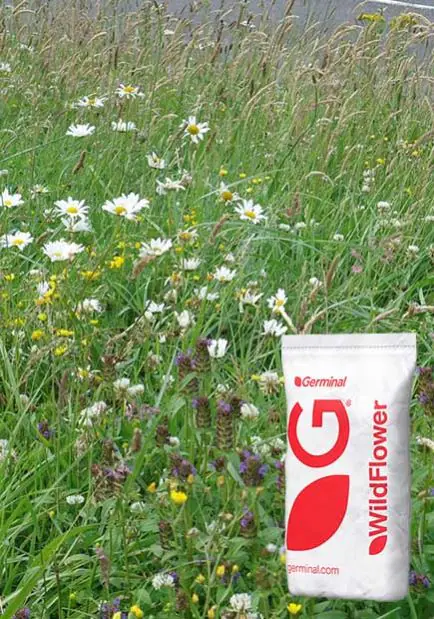Description
A mixture of wildflower and grass species suited to calcareous soils and designed as a standard mixture to create a habitat on these specialist sites where colonisation can be difficult. Suitable for being managed by grazing by sheep in the long term however for the first few seasons managing by cutting might be required in order to develop the depth of sward to avoid excessive poaching. A great habitat for invertebrates, birds and mammals. If possible when cutting in late summer an area of up to one third should be left uncut until the following spring for overwintering invertebrates. This area should be alternated each year.
Where to use this mixture:
- Free draining soils
- Limestone areas
- Earthwork areas
- Road verges
- To encourage insects and birds
Specification
| Product Name | RE4 (Lowland Limestone - CG2 Grassland) | ||
| Mixture Breakdown | 1.0% | Yarrow | (Achillea millefolium) |
| 0.5% | Kidney Vetch | (Anthyllis vulneraria) | |
| 0.5% | Hoary Plantain | (Plantago media) | |
| 1.4% | Lady's Bedstraw | (Galium verum) | |
| 1.0% | Birdsfoot Trefoil | (Lotus corniculatus) | |
| 0.5% | Yellow Rattle | (Rhinanthus minor) | |
| 3.1% | Sainfoin | (Onobrychis vicifolia) | |
| 3.5% | Ribwort Plantain | (Plantago lanceolata) | |
| 1.1% | Salad Burnet | (Sanguisorba minor) | |
| 2.0% | Oxeye Daisy | (Leucanthemum vulgare) | |
| 1.0% | Red Clover | (Trifolium pratense) | |
| 1.0% | Wild Carrot | (Daucus carota) | |
| 0.1% | Betony | (Stachys betonica) | |
| 3.1% | Flax | (Linum usitatissimum) | |
| 0.2% | Goats Beard | (Trapapogon pratensis) | |
| 30.0% | Sheeps Fescue | (Festuca ovina) | |
| 20.0% | Slender Creeping Red Fescue | (Festuca rubra litoralis) | |
| 8.0% | Crested Dogstail | (Cynosurus cristatus) | |
| 10.0% | Tall Fescue | (Festuca arundinacea) | |
| 2.5% | Creeping Bent | (Agrostis stolonifera) | |
| 1.0% | Browntop Bent | (Agrostis Capillaris) | |
| 2.0% | Tall Oat-grass | (Arrhenatherum elatius) | |
| 2.0% | Golden Oat Grass | (Trisetum flavescens) | |
| 1.0% | Tufted Hair Grass | (Deschampsia caespitosa) | |
| 0.5% | Crested Hair Grass | (Koeleria macrantha | |
| 1.0% | Quaking Grass | (Briza media) | |
| 2.0% | Timothy (Small eared) | (Phleum bertolonii) | |
Web: germinalamenity.com
Tel: 01522 868714
Usage Guide
| Sowing Rate | 5 g/m2 | ||||||||||||
|---|---|---|---|---|---|---|---|---|---|---|---|---|---|
| Sowing Time | March - October | ||||||||||||
| Sowing Depth | 10 mm | ||||||||||||
| Sowing Instructions | Create a fine friable seedbed down to 150 mm in depth. Carry out two equal sowings at right angles to each other and diagonally to main axis. Broadcast manually or use seed drill, rake level and roll. Ensure good seed to soil contact. | ||||||||||||
| Maintenance |
|
||||||||||||
|
|||||||||||||
Web: germinalamenity.com
Tel: 01522 868714
Q & A
Product Questions
How much do I need?
Enter the dimensions of your area in metres:

Trusted Supplier

Free Express Delivery







